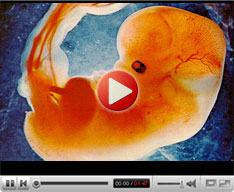
Know Infertitlity
Infertility treatments
Diagnosing InfertilityMale:
Obstetrics and Gynaecology
Infertility Treatment Services
Andrology |
HysteroscopyHysteroscopy is a procedure that lets your doctor to view the inside of your uterus in order to detect and treat the possible causes of abnormal bleeding. This procedure is performed using a hysteroscope which is a thin, illuminated tube with a camera attached that is inserted into the vagina to examine the inside of the uterus and the cervix. This allows the surgeon to identify abnormalities present in the lining of the uterus. Hysteroscopy can be of two types: diagnostic and operative.
When is hysteroscopy done?Your surgeon may recommend hysteroscopy to determine and correct conditions such as:
Hysteroscopy ProcedureYou will be given a sedative followed by anesthesia. Then the surgeon will dilate the cervix in order to insert the hysteroscope through the vagina into the uterus. Carbon dioxide gas or a liquid solution is passed through the hysteroscope to dilate it and to clear away any mucus and blood. The lighted hysteroscope allows the surgeon to view the uterus and the openings of the fallopian tubes clearly. If surgery is required, small instruments are inserted through the hysteroscope into the uterus. The time taken to perform hysteroscopy varies depending on the length of the procedure (if it is diagnostic or operative) and if additional surgeries are carried out at the same time. You may experience cramping and vaginal bleeding for a couple of days after the procedure. You may also feel pain in the shoulder if carbon dioxide gas was used during the procedure. However if symptoms like fever, heavy vaginal bleeding and severe abdominal pain persist, you should contact your surgeon immediately. Benefits of hysteroscopyHysteroscopy has the following advantages:
Complications due to hysteroscopyAlthough hysteroscopy is a relatively safe procedure, certain complications may arise in some cases such as:
|
Our TeamNews & EventsClinic LocationVideo Gallery |















